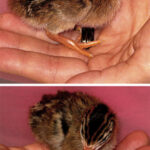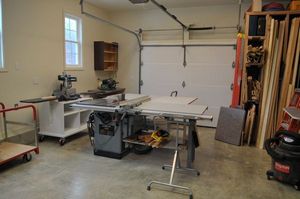When most people consider purchasing a new pet for their child, a guinea pig, hamster or other small rodent commonly springs to mind, based on the widespread assumptions that these types of animals are easy to care for, safe for children, fun, educational and don’t take up much space. However, there is an alternative pet species most people don’t consider, one that may be even easier to care for, at least as safe and space-efficient, and way more fun: the hermit crab. My family has kept hermit crabs for years, and we’ve found them to be fun, educational, full of surprises, and surprisingly easy to care for.
Hermies are excellent first-time pets for children. Contrary to popular belief, and unlike their rodent counterparts, they are completely non-aggressive animals under normal circumstances. They do have a powerful set of pinchers, but in our experience, unless they’ve spent a lot of time in pet stores being prodded and abused by onlookers reaching into their cages, hermies will usually only pinch humans if they feel off balance, such as when they’re being held too unsteadily in the palm of someone’s hand. You will find, though, that just like any other animal, hermit crabs do each have their own unique personalities, and some are more aggressive than others, but for the most part, we’ve found that they don’t bite or pinch unless provoked.
Like all species of pets, they do have their own set of special requirements, but they’re very simple and don’t require supplies that are any more extraordinary than any other pet.
Because of their name, most people think the hermit crab is shy, but they’re actually quite social, and always eager to explore their environments, and preferring to live in colonies of up to a hundred in the wild. Our hermies are always happiest when they are kept with at least one or two others of their own kind, but they will form social bonds with humans as well. Fed and treated gently long enough by the same person, they will recognize their owners and patiently allow people to pick them up, take them out of their tanks, and look at them.
Though they require supervision so that they won’t get stepped on or accidentally kicked, our hermies like to wander around our house and front yard, exploring all there is to see. If you have other pets, or are afraid your hermies are so tiny that you won’t find them again, they are just as happy wandering around in small, clear hamster balls.
They’re incredibly easy and cheap to feed, too. They don’t really require any special food. According to the premiere web site in hermit crab care, Hermit-Crabs.com, in the wild, they are scavengers and eat anything they can find, even crab meat! In captivity, they aren’t any pickier. My hermies do seem to love Kraft American cheese slices and bananas, and won’t touch anything spicy, but for the most part, the “hermit crab food” you see being sold in pet stores is totally unnecessary if you’re feeding them a well-balanced diet. They will eat any bit of your table scraps and only require being fed once every couple of days. No one is quite sure what the exact nutritional requirements are for a hermit crab, but as long as you give them a wide variety of meats, fruits and vegetables, along with crushed oyster shell in their water for calcium, they’ll be fine. In order to keep the tank as clean as possible, I recommend feeding them at night when they’re most active and likely to be out looking for food. They eat very little, so you can just remove whatever is left over in the morning.
The primary consideration is its habitat. In myy opinion, under no circumstances should a hermit crab ever be kept in one of those tiny little plastic pet carriers sold as “hermit crab homes” in mall kiosks and even some pet stores. Those are way too small for a hermit crab – it would be like living in a closet for a human. A ten-gallon tank filled with at least 4″ of aquarium-grade or sandbox-quality sterile sand or forest bedding substrate is a minimum, and it will probably cost about the same as the plastic carrier anyway. Four inches of sand or substrate in the tank is the minimum, and more if your hermies are larger, because they do like to burrow and they need a safe environment to tunnel into when they molt their exoskeletons, which they will do periodically. (Be prepared for your children to gather around and “Ooooh!” and “Ahhh!” and maybe “Ewww!” when they find the old exoskeleton sitting empty in the middle of the tank one morning!)
Molting hermies do require that they be kept in isolation so they won’t be attacked by other hermies. They are tropical creatures, so they do require a consistently warm, humid environment, so be sure to read a basic care book such as Sue Fox’s Hermit Crabs: The Complete Pet Owner’s Manual, or look up care instructions on Google – information about these little guys is plentiful on the Internet!
If you’re purchasing a hermie for a small child, be sure to teach them how to handle their hermies with care and supervise any interaction. Hermies do pinch if they’re stressed, or if they’re held in a cupped or unfamiliar hand. Care should be taken that a hermit crab is never dropped from any great height – the shock of the impact could kill them instantly. Also, one should never, ever try to force a hermit crab out of its shell, as they will allow themselves to be seriously, even fatally injured before allowing themselves to be removed from their shells.
Hermit crabs may seem like an unusual pet that require a lot of special knowledge, but once they have an adequate habitat, which is no more challenging to set up than it is for a reptile, they require only regular food and water and an occasional inspection of the surface of their tank floor. Just pick out any debris with a spoon – they’re otherwise very clean animals. Healthy hermies don’t ever give off an odor. Hermies can also be very educational, especially for your budding marine biologist or young environmentalist with a passion for ocean conservation. Taken care of properly, they are extraordinarily long-lived animals and can live for decades, growing to be the size of softballs. Hermit crabs make for fun, no-fuss, droll little pets the whole family can enjoy!
SOURCE:
http://www.hermit-crabs.com









